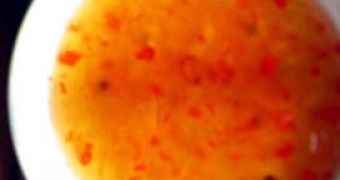The vague time location of the catastrophic eruption of Mount Vesuvius, which covered the Roman city of Pompeii under a thick layer of volcanic lava, ash and dust, has been made more precise now. The rotten remains of a fish sauce dish helped scientists pinpoint the date of the event to 24 August 72 AD.
Italian specialists analyzing the soil from the site of one of the most disastrous events in Italy's history, the eruption of mount Vesuvius during the Roman times, found the rotten leftovers of a fish-based meal which seemed to be better preserved than other items found in the area. Luckily, if we may say so, the volcano emanations also have some conservative effects, which helped the remains found on the bottom of seven jars to be “frozen” in time under the 9-foot (about 3 meter) to 20-foot (6 meter) thick volcanic Earth layer for about 2 two millennia. The contents of the jars were brought to daylight a few years ago in the location of the most famous Pompeian food producer, Aulus Umbricius Scaurus.
Besides the precise dating of the event, on August 24th 72 AD, the discovery also showed that the local Pompeian diet of the time was mainly comprised of bougues-based (or boops-boops, as it was also called) meals. The bougues was a fish species that filled the Mediterranean Sea waters of those times from July to August.
Annamaria Ciarallo, the director of Pompeii's Applied Research Laboratory, reported to Discovery News that “Analysis of their contents basically confirmed that Mount Vesuvius most likely erupted on 24 August 79 AD, as reported by the Roman historian Pliny the Younger in his account on the eruption.” This comes to contradict the speculations issued by the discovery in the ashes of Pompeii of a coin that made reference to Titus' 15th imperatorial acclamation thought to have taken place on September 7th 79 AD. Addressing that matter, Teresa Giove, a coin expert from the Archaeological Museum of Naples, stated that “Unfortunately, that coin can't be taken as a dating evidence, since it is hardly readable. I myself agree with Ciarallo's dating of the eruption, even though I think that a bit of mystery remains. However, it is not so important whether the eruption occurred in August or in October”.
Ciarallo's theory is also backed by natural data, as she explains, “All pollen found in Pompeii belongs to some 350 summer species. I think this is more strong evidence in favor of Pliny's account.”

 14 DAY TRIAL //
14 DAY TRIAL //